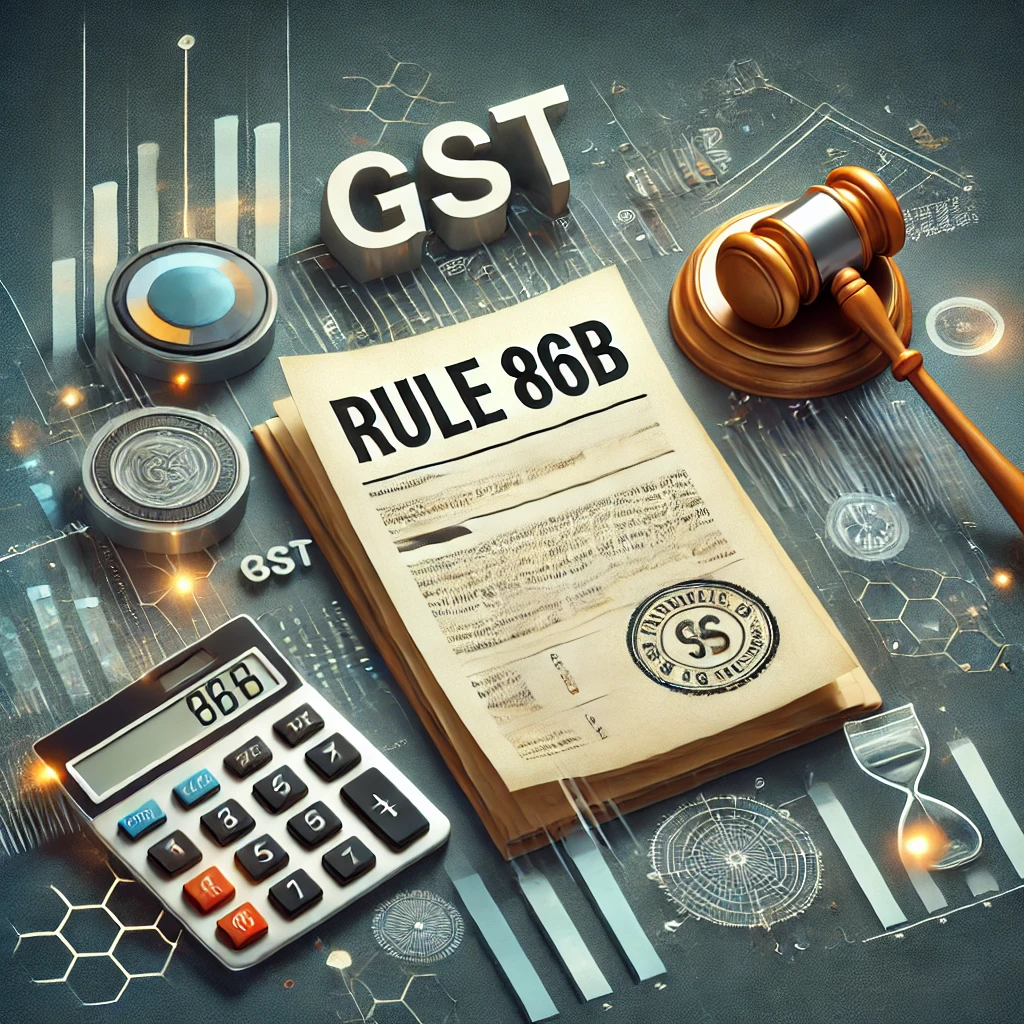The Goods and Services Tax (GST) regime in India has streamlined taxation for businesses, and one of its critical components is the GSTR-1 return. GSTR-1, or the Return of Outward Supplies, is a monthly or quarterly filing that businesses registered under GST must submit to report their outward supplies of goods and services. This blog post provides a comprehensive guide to GSTR-1, covering its importance, filing process, due dates, and key compliance tips to help businesses stay GST-compliant in 2025.
What is GSTR-1 under GST Law?
GSTR-1 is a mandatory GST return form that captures details of all outward supplies made by a registered taxpayer during a specific tax period. Outward supplies include sales, exports, and other taxable supplies of goods or services. The data submitted in GSTR-1 is used to compute the tax liability of the supplier and is shared with the recipient for Input Tax Credit (ITC) reconciliation via GSTR-2A and GSTR-2B.
Legal Provisions
Section 37
(1) Every registered person, other than an Input Service Distributor, a non-resident taxable person and a person paying tax under the provisions of section 10 or section 51 or section 52, shall furnish, electronically subject to such conditions and restrictions and in such form and manner as may be prescribed, the details of outward supplies of goods or services or both effected during a tax period on or before the tenth day of the month succeeding the said tax period and such details shall, subject to such conditions and restrictions, within such time and in such manner as may be prescribed, be communicated to the recipient of the said supplies:
Rule 59(1)
(1) Every registered person, other than a person referred to in section 14 of the Integrated Goods and Services Tax Act, 2017, required to furnish the details of outward supplies of goods or services or both under section 37, shall furnish such details in FORM GSTR-1 for the month or the quarter, as the case may be, electronically through the common portal, either directly or through a Facilitation Centre as may be notified by the Commissioner
Form GSTR-1
The return of outward supplies is notified in Form GSTR 1 and included as a integral form of GST Law. The same can be accessed by clicking the download button.
Key Details Included in GSTR – 1
- Taxable Supplies: Details of B2B (Business-to-Business) and B2C (Business-to-Consumer) transactions.
- Invoice Details: Invoice-wise details for B2B transactions, including GSTIN of the recipient.
- Debit/Credit Notes: Adjustments for returns or corrections.
- Exports: Details of zero-rated supplies and supplies to SEZs.
- Advances: Taxes paid on advances received and advances adjusted during the tax period.
- HSN/SAC Codes: Summary of goods (HSN) and services (SAC) supplied.
By accurately filing the return of outward supplies, businesses ensure seamless ITC flow and compliance with GST regulations.
Who Needs to File GSTR-1?
GSTR-1 must be filed by all GST-registered taxpayers, except:
- Input Service Distributors (ISDs)
- Composition Scheme taxpayers
- Non-resident taxable persons
- Taxpayers under the OIDAR (Online Information and Database Access or Retrieval) services
Filing Frequency
- Monthly Filing: Mandatory for taxpayers with an annual turnover exceeding ₹5 crore or those who have opted for monthly filing.
- Quarterly Filing: Available for taxpayers with an annual turnover up to ₹5 crore under the QRMP (Quarterly Return Monthly Payment) scheme.
GSTR – 1 Due Dates for 2025
To avoid penalties, businesses must adhere to the GSTR-1 filing deadlines:
- Monthly Filers: The due date is the 11th of the following month. For example, GSTR -1 for April 2025 is due by May 11, 2025.
- Quarterly Filers: The due date is the 13th of the month following the quarter. For instance, GSTR- 1 for the January–March 2025 quarter is due by April 13, 2025.
🔗 For comprehensive month-wise due dates, refer our compliance calendars posted in our Resources Section.
How to File GSTR-1?
Filing GSTR-1 is straightforward through the GST portal. Follow these steps:
- Log in to the GST Portal: Visit www.gst.gov.in and log in using your credentials.
- Navigate to Returns: Go to the ‘Services’ tab, select ‘Returns,’ and choose ‘Returns Dashboard.’
- Select the Period: Choose the relevant tax period (month or quarter).
- Prepare GSTR-1: Click on ‘Prepare Online’ or upload data using the offline tool.
- Enter Details: Input details of outward supplies, including invoices, debit/credit notes, and exports.
- Validate and Submit: Verify the data, resolve errors, and submit the return.
- File with DSC/EVC: File the return using a Digital Signature Certificate (DSC) or Electronic Verification Code (EVC).
Tools for GSTR -1 Filing
- GST Offline Tool: For bulk data uploads.
- GSTR- 1 IFF (Invoice Furnishing Facility): For quarterly filers to furnish B2B invoices monthly (optional).
- Third-Party Software: Tally, ClearTax, or other GST-compliant software for simplified filing.
Importance of Accurate GSTR – 1 Filing
Filing GSTR-1 accurately and on time is critical for several reasons:
- ITC Eligibility: Incorrect or late GSTR-1 filings can prevent recipients from claiming ITC, leading to disputes.
- Compliance: Non-compliance can result in penalties of ₹10,000 (₹5,000 each under CGST and SGST) or higher.
- Audit Trail: GSTR-1 data is cross-verified with GSTR-3B and other returns, ensuring transparency.
- Business Reputation: Timely filings enhance trust with buyers and suppliers.
Common Mistakes to Avoid
To ensure error-free GSTR-1 filing, avoid these pitfalls:
- Incorrect Invoice Details: Ensure GSTIN, invoice numbers, and tax amounts are accurate.
- Missing Invoices: Report all taxable supplies, including zero-rated and exempt supplies.
- Wrong HSN/SAC Codes: Use the correct codes to avoid mismatches.
- Late Filing: File before the due date to avoid penalties and interest.
- Non-Reconciliation: Reconcile GSTR-1 with GSTR-3B and books of accounts.
Tips for GST-Compliant GSTR-1 Filing
- Automate with Software: Use GST-compliant software to reduce manual errors.
- Reconcile Regularly: Match GSTR-1 data with GSTR-2A/2B and GSTR-3B.
- Stay Updated: Monitor GST notifications for changes in rules or due dates.
- Seek Professional Help: Consult a GST practitioner for complex transactions or audits.
- Use IFF for QRMP: Quarterly filers can use the IFF to furnish B2B invoices monthly, ensuring ITC availability for recipients.
Penalties for Non-Compliance
Failure to file GSTR-1 on time attracts:
- Late Fees: ₹50 per day (₹25 each under CGST and SGST), with a maximum of ₹10,000.
- Interest: 18% per annum on any unpaid tax liability.
- Notices: GST authorities may issue notices for non-compliance, leading to audits or penalties.
Conclusion
GSTR- 1 is a cornerstone of GST compliance, ensuring accurate reporting of outward supplies and seamless ITC flow. By understanding its requirements, adhering to due dates, and avoiding common mistakes, businesses can maintain compliance and avoid penalties. Leverage automation tools, stay updated with GST regulations, and consult professionals to streamline your GSTR-1 filing process in 2025.
🔗Suggested Contents:
A deep analysis of the Invoice Management System (IMS), 2025
Unveiling the process of GST Refunds

